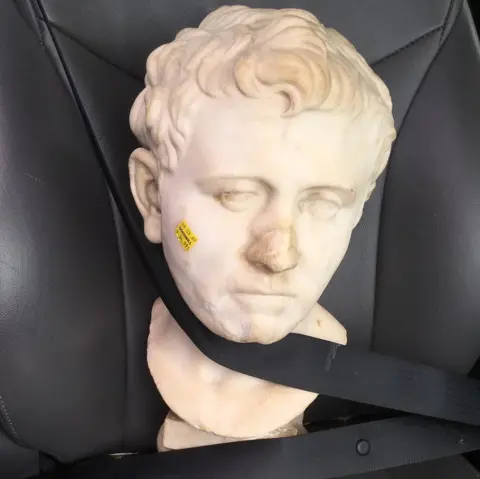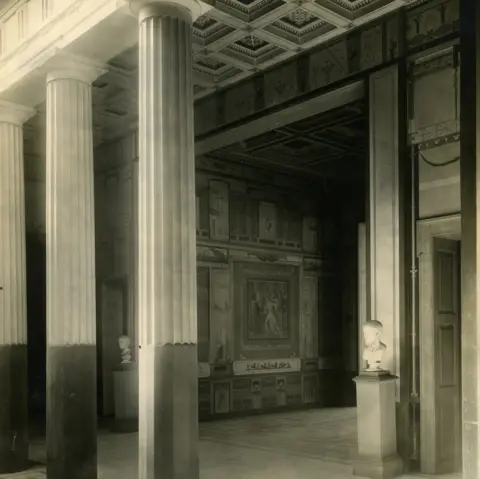How a priceless Roman bust ended up in a Texas thrift store
 Laura Young
Laura YoungIn 2018 Laura Young purchased a bust at Goodwill, a second-hand shop in the Texan city of Austin, for just $35 (£28). She photographed it strapped into the passenger seat of her car.
An independent antique and vintage dealer, she told the BBC she went into the thrift store "hoping to find something cool".
On closer examination in the sunlight, the bust looked like it could be "really, really old", she said. She did a quick Google search for Roman marble busts and thought they looked similar.
Ms Young then made some enquiries and the statue turned out to be a 2,000-year-old Roman bust from the 1st Century BC or 1st Century AD - an item of incalculable value.
"I'm not even sure how it's possible to put a meaningful monetary value on something that has such an important history, but on the other hand could never, ever be sold," said Lynley McAlpine from the San Antonio Museum of Art.
She said the bust could represent Sextus Pompey - a Roman military leader who fought against Julius Caesar.
 Laura Young
Laura YoungFurther enquiries revealed that the bust's ownership could be traced to a replica Roman Villa in Germany that exhibited original artefacts alongside replica ones.
The Pompejanum in the Bavarian town of Aschaffenburg was built in the 1840s and had been severely damaged by Allied bombing during World War Two.
How the bust got from Aschaffenburg to Austin is unclear, but it seems probable that an American soldier took the statue to the US. American troops were stationed in Aschaffenburg until the end of the Cold War.
And because it was probably an item looted during war time, Ms Young could not think about selling it as an antique.
Instead she negotiated a loan of the bust to the San Antonio Museum of Art before its eventual return to Bavaria.
But the negotiations took several years - and during that time Ms Young kept the bust in her living room.
"He looked very nice. And he was just there staring at us for three plus years," she said.
 BavarianAdministration of State-Owned Palaces,Gard
BavarianAdministration of State-Owned Palaces,GardHanding the bust over to the San Antonio Museum of Art had been a bittersweet moment, Ms Young said, because she knew she probably would not find anything like it again.
"Even if I found something more valuable, and was able to actually sell it and make that profit, he would still probably be the best thing," she said.
But last weekend she visited the bust in the museum - "It was so nice to see him in there, in his element where he should be."
The bust is currently on display in San Antonio and will be returned to the Pompejanum in May 2023.
